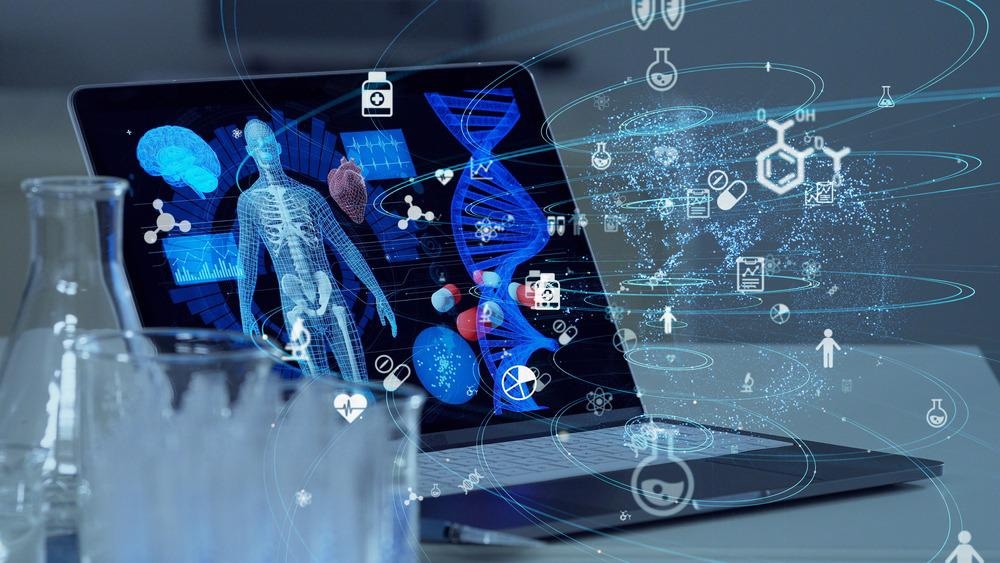Drug discovery is currently thriving across the world, with new drugs being discovered and approved for use each year at an increasing rate. Advances in the drug discovery process have been aided by developments in technology that have helped to speed up, reduce the cost, and enhance the efficacy of identifying novel therapeutic targets.

Image Credit: paulista/Shutterstock.com
There is a current focus on introducing new drugs that work via novel mechanisms of action (MoA) and that treat neglected diseases for which there are currently limited treatment options and poor prognoses. Advances in drug discovery will likely continue in the fields of oncology, immunology, and gene therapy in the coming years.
New drugs emerging on the market
In 2018, 59 new drugs were approved for use by the FDA, representing a two-decade high. Recent research conducted by J.P. Morgan has revealed that, on average, 20–25 new drugs have been approved for use in the US every year over the past 20 years, with this productivity speeding up in the last five years, where the average number of annual approvals has been between 40 and 50.
In terms of which diseases, new drugs are being developed for, research indicates that there is a clear focus on neoplasms (e.g. cancer) and infectious disease (particularly following the Covid-19 pandemic). The focus on these areas is thought to be slowing down the average success rates of drug development programs and increasing the cost. For example, drugs being developed for neoplasms have relatively low success rates in the later phases of clinical development.
In addition, it has become increasingly challenging over recent years to clinically develop oncologic drugs. Factors such as requirements for progression‐free survival and/or overall survival in clinical trials primarily investigating efficacy have such that are limiting the success of oncologic drug development.
The current cost of drug discovery
As discussed above, the current focuses of the drug discovery sector are contributing to raising the cost of the process. While the cost of technology is falling, the number of novel pharmaceutical candidates that are put through clinical trials without success is driving up the total cost involved with drug development. A new drug may make it through preclinical trials, and even through phase I and phase II only to fail at phase III. This could see years of research and the money and resources attributed to it wasted.
The cost of developing a drug through to the stage of approval was 14.5 times higher in the 2010s than it was in the 1970s. Because the industry is currently focused on developing drugs for areas where the failure rate is generally higher, this is raising the overall cost even though technology may be cheaper.
AI and drug discovery
To overcome these limitations, the drug discovery process has begun to leverage artificial intelligence (AI) to enhance the success rate of drug development, speed it up, and bring down costs. It takes, on average, 12 years for a novel therapeutic to be carried through the entire drug development process and reach approval. Data shows that only one in 1,000 drugs make it through the preclinical stage into human trials. From there, only one in five go on to be approved.
AI is being used alongside automation and robotics to help researchers identify suitable molecules for drug development. AI can rapidly screen thousands of molecules in a fraction of the time it would take human scientists to locate compounds that have the appropriate structure to interact with a target in a way that would theoretically evoke a desired therapeutic action.
Already, high-throughput robotic screening and automated systems are helping to speed up the drug development process. Traditional rule-based and model-based approaches, tools for de novo molecular design, and prototypical robotic systems are examples of platforms that are already important tools for modern drug discovery.

Image Credit: metamorworks/Shutterstock.com
Limitations to drug discovery
While drug development has seen significant progression over the last few decades, it is limited by the extent of our knowledge of the etiology of the diseases that new drugs are being designed to treat. Growing our understanding of disease pathology and progression will greatly help scientists to develop new drugs, as it would give them a thorough understanding of the intricate biological underpinnings of disease, and, therefore, help them identify effective therapeutic targets.
Currently, most drug discovery research begins with hypothesizing the pathways involved in disease and selecting therapeutic targets based on cellular and animal models. Having a thorough understanding of the etiology of the diseases would remove any of the guesswork from this process, and reduce the time spent developing drugs that will eventually fail.
As research into disease pathology and progression continues, we expect advances to translate to the field of drug discovery. In the coming years, the incorporation of AI alongside our increasing knowledge of disease will help to streamline the drug development process and make it more successful.
Further Reading